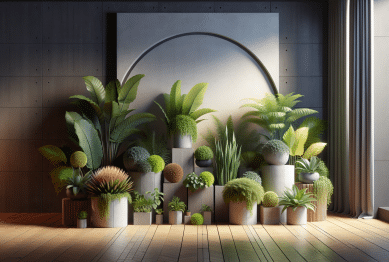Discover how raised bed gardening transforms any yard, patio, or balcony into a productive oasis. In this detailed guide, you’ll explore the basics, design ideas, soil secrets, and plant recommendations that can help almost anyone cultivate a healthier, thriving garden—right at home.
The Appeal and Basics of Raised Bed Gardening
Raised bed gardening has become a beloved method for both beginners and seasoned green thumbs. The main attraction? Versatility. Enjoy greater control over soil quality, water retention, and growing conditions. Standard garden beds can be placed just about anywhere—backyards, roof terraces, patios, or even over poor soil. This flexibility allows city dwellers, renters, and suburban homeowners to all try their hand at vegetable gardening, creating abundant spaces even where ground plots are inaccessible. Wondering why so many people turn to this approach? Raised beds can be adapted to different climates, prevent soil compaction, and offer better pest control, making them incredibly user-friendly.
One core benefit of raised garden beds is ease of access. These beds, lifted from the ground by frames or mound structures, make planting and harvesting less strenuous. For individuals with mobility issues or limited flexibility, this method puts less strain on backs and knees. Designing raised beds also opens new aesthetic opportunities—wood, metal, and stone planters can be tailored to complement any landscape or patio style. From square foot gardening to decorative flower borders, the creative possibilities are vast and endlessly customizable.
Raised beds offer a smart solution for improving soil structure. In many urban or suburban areas, native soil can be compacted, contaminated, or simply unproductive. The ability to fill your bed with a specific soil blend means you can start growing immediately, avoiding the long-term amendments typically required for traditional ground plots. From better drainage to faster soil warming in spring, raised beds help foster optimum conditions for root and plant health. No wonder they’re so popular among home garden enthusiasts exploring sustainable living practices.
Choosing Materials and Location for Lasting Success
Selecting the right materials for your raised bed gardening project is essential for durability and garden health. Untreated cedar and redwood offer natural resistance to rot and pests, making them a preferred choice for long-lasting garden frames. Recycled composite materials and metal beds present eco-friendly, low-maintenance options that fit a sleek, modern aesthetic. Each material has its pros and considerations. Wood is classic but needs eventual replacement; metal lasts longer but can heat up in sunny climates. Analyze your space and climate to choose the material that matches your garden’s longevity goals and budget.
Location is another key factor for thriving raised beds. Most vegetables, fruits, and herbs perform best with six to eight hours of full sunlight each day. Place your beds away from dense shade (from buildings or trees) and close to water sources for easy maintenance. Good air circulation helps prevent fungal diseases, so avoid tucking beds too close together or against solid fences. Consider convenience: beds situated near the kitchen door or along a walkway make harvesting herbs and vegetables a simple part of your daily routine.
Drainage, too, cannot be overlooked. Elevated beds naturally drain better than ground-level plots, but extremely heavy clay soils or dense subsoils may still lead to waterlogging. When assembling your raised beds, it is wise to use a coarse base layer, such as gravel, then add high-quality topsoil and compost. Custom soil mixes can foster stronger root systems and give you more control over nutrients. This consideration is especially important for organic gardening, where balanced, living soil is key to ongoing success. For those working with limited space or concrete patios, ensure your beds allow for excess water runoff and don’t flood neighboring areas.
Soil Preparation and Amendments for High-Yield Beds
Good soil is the heart of every productive raised bed. A rich blend of topsoil, compost, vermiculite, and peat moss delivers nutrients, aeration, and superior water retention. Start by filling each bed with a mix of approximately 60% screened topsoil, 30% compost, and 10% aerating amendments like perlite or coconut coir. For organic raised gardening, focus on compost sourced from yard waste, leaves, or plant-based kitchen scraps. This approach nurtures beneficial microbes, enabling plants to access critical nutrients over time.
Testing your soil before planting helps ensure you’re giving crops exactly what they need. Simple at-home test kits analyze pH, nitrogen, phosphorus, and potassium levels. Many raised bed gardeners aim for a slightly acid to neutral pH, usually between 6.0 to 7.0, which suits most vegetables and herbs. Adjust imbalances with targeted amendments: lime raises pH, while sulfur lowers it. Natural fertilizers—such as bone meal, greensand, and composted manure—provide slow-release nutrition and improve soil fertility sustainably.
Mulching is also a critical step for locked-in moisture and weed suppression. Apply a 2-4 inch layer of shredded leaves, straw, or bark mulch after planting. This keeps the soil temperature stable and reduces the need for frequent watering. Over time, organic mulch breaks down, feeding the microbial life and always improving your beds’ quality. The result is a living ecosystem, supporting healthier, more vigorous growth throughout the growing season and less maintenance for the gardener.
Best Crops and Companion Planting Techniques
Raised bed gardening is ideal for a wide variety of crops—from leafy greens and tomatoes to root vegetables and aromatic herbs. Cool-season crops like lettuce, spinach, and radishes thrive in early spring or autumn. Warm-season favorites—tomatoes, peppers, cucumbers—grow quickly in well-drained, sun-warmed soil. Consider mixing ornamental flowers such as marigold or nasturtium alongside vegetables. These not only add pops of color but also attract pollinators, benefiting yields from beans, peas, and squash.
Implementing companion planting in raised beds enhances natural pest control and makes the most of available space. For example, basil can help deter tomato pests, while planting carrots with onions may reduce the risk of soil-borne disease. Companion planting can also improve flavor, maximize sunlight exposure, and even reduce the need for chemical interventions. Many guidebooks and extension service websites offer detailed charts to help plan the right plant partnerships for your climate and space constraints.
Successive planting is another advanced raised bed gardening technique. Once early crops are harvested, refill spaces with new seedlings for a continuous supply throughout the season. Fast-growing greens can be interplanted between slower-maturing crops, keeping garden beds productive and weed growth minimal. These strategies maximize yields in compact areas and help create a more resilient, self-sustaining home garden.
Watering, Maintenance, and Common Challenges
Effective watering is crucial in raised bed gardening. Because soil is elevated, it can dry out more quickly—especially in warm weather or full sun locations. Setting up drip irrigation or soaker hoses allows for deep, even watering with minimal waste. Water in the early morning or late evening to reduce evaporation losses and keep plant roots consistently hydrated. During peak summer heat, monitor your beds daily and adjust schedules as needed for optimal growth.
Pest management becomes simpler with raised beds, but no system is entirely fail-proof. Physical barriers such as row covers or mesh nets block common invaders like aphids and cabbage moths. Raising beds also reduces soil-borne disease occurrence and makes crop rotation more manageable. If you see signs of trouble, use organic pest solutions when possible, such as neem oil or insecticidal soap. Regular handpicking of pests supports eco-friendly control for smaller gardens, reducing chemical use and supporting beneficial insects.
Ongoing maintenance involves occasional weeding, topping up soil levels, and refreshing mulch as needed. Keep an eye on soil health by adding compost every growing season or after heavy harvests. Examining plants regularly—checking for signs of disease, nutritional deficiencies, or stress—lets you catch problems early. Raised bed gardening doesn’t mean low effort, but careful, routine attention results in larger, tastier harvests and less work over time. For gardeners pursuing self-sufficiency, the rewards are worth the ongoing care.
Year-Round Use and Expanding Your Raised Garden
Raised beds extend the growing season in surprising ways. The soil warms up quickly in spring and stays productive well into the fall. With the addition of simple season extenders—cold frames, row covers, or portable greenhouses—you can start planting earlier and harvest later, maximizing every inch of garden space. In milder climates, raised beds can support winter greens and root crops with minimal intervention.
Many raised bed gardeners experiment with vertical gardening, stacking pots, or adding trellises to boost available planting area. This method works well in small patios or urban settings, making the most of limited real estate. Vertical supports enable crops like beans, peas, and cucumbers to grow upward, increasing yield and improving air flow around the plants. By mixing heights and formats, gardens become more visually appealing and can even offer some privacy screening in open yards.
Scaling up your raised bed garden is straightforward—simply add more beds, connect irrigation systems, or incorporate new soil blends for specialized crops such as berries or flowers. Many gardeners choose to keep one bed for perennial herbs or pollinator-friendly flowers, while rotating others for annual vegetables. Through observation, adaptation, and small changes year over year, raised bed gardening remains an enjoyable, rewarding project for homes of every size.
References
1. University of Minnesota Extension. (n.d.). Raised bed gardening. Retrieved from https://extension.umn.edu/planting-and-growing-guides/raised-bed-gardens
2. Royal Horticultural Society. (n.d.). Raised beds. Retrieved from https://www.rhs.org.uk/advice/profile?pid=749
3. Cornell University Cooperative Extension. (n.d.). Soil preparation for gardens. Retrieved from http://ccesuffolk.org/gardening/soils-climate/soil-preparation
4. University of Maryland Extension. (n.d.). Success with raised beds. Retrieved from https://extension.umd.edu/resource/vegetable-garden-raised-beds
5. University of California Agriculture & Natural Resources. (n.d.). Managing common pests in the vegetable garden. Retrieved from http://ipm.ucanr.edu/PMG/GARDEN/vege.html
6. Colorado State University Extension. (n.d.). Mulches for home grounds. Retrieved from https://extension.colostate.edu/topic-areas/yard-garden/mulches-for-home-grounds-7-214/









